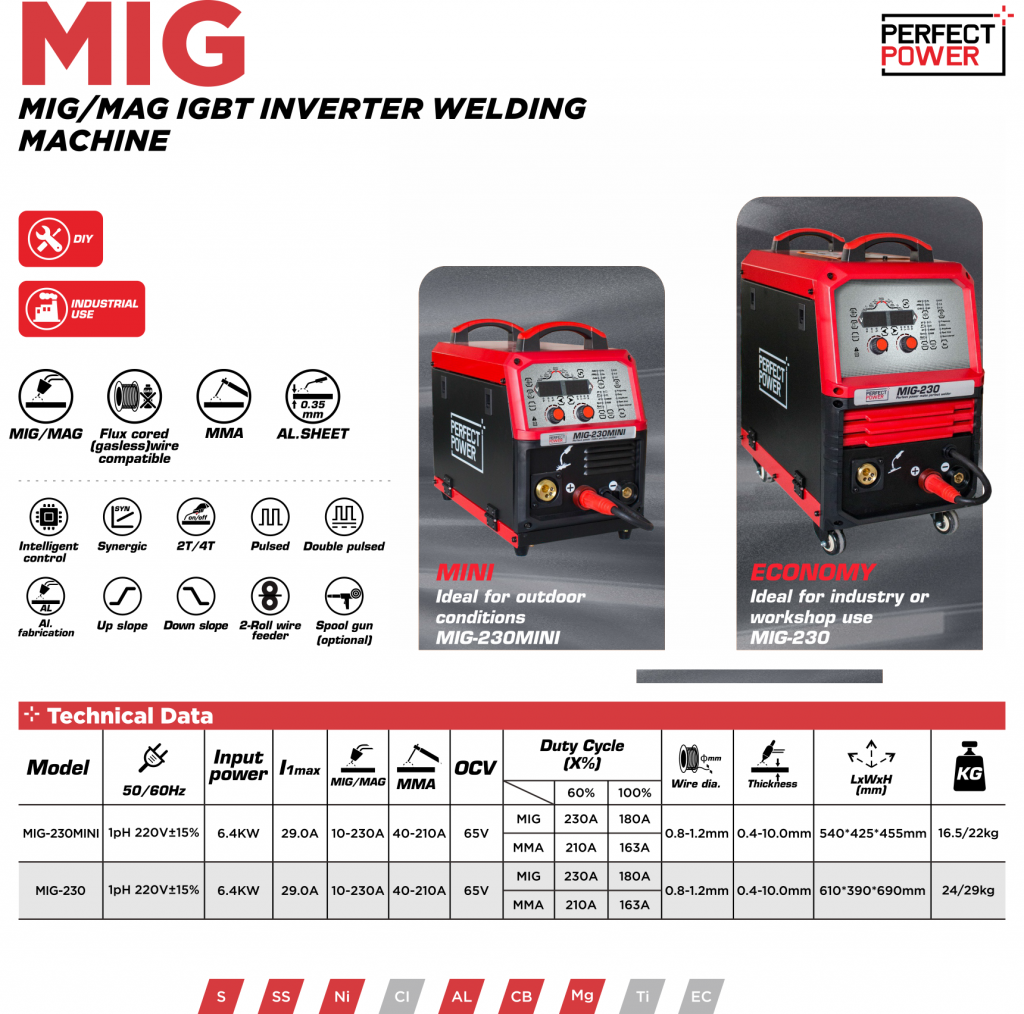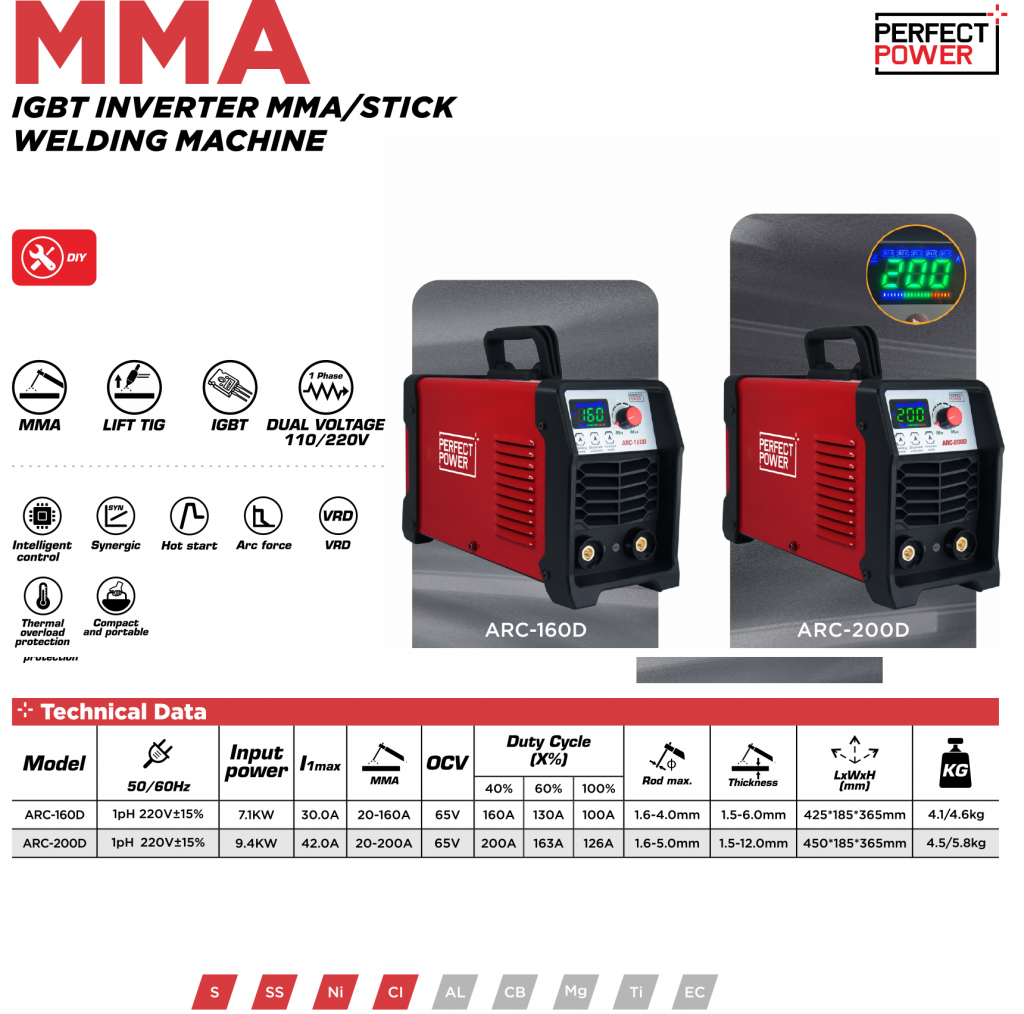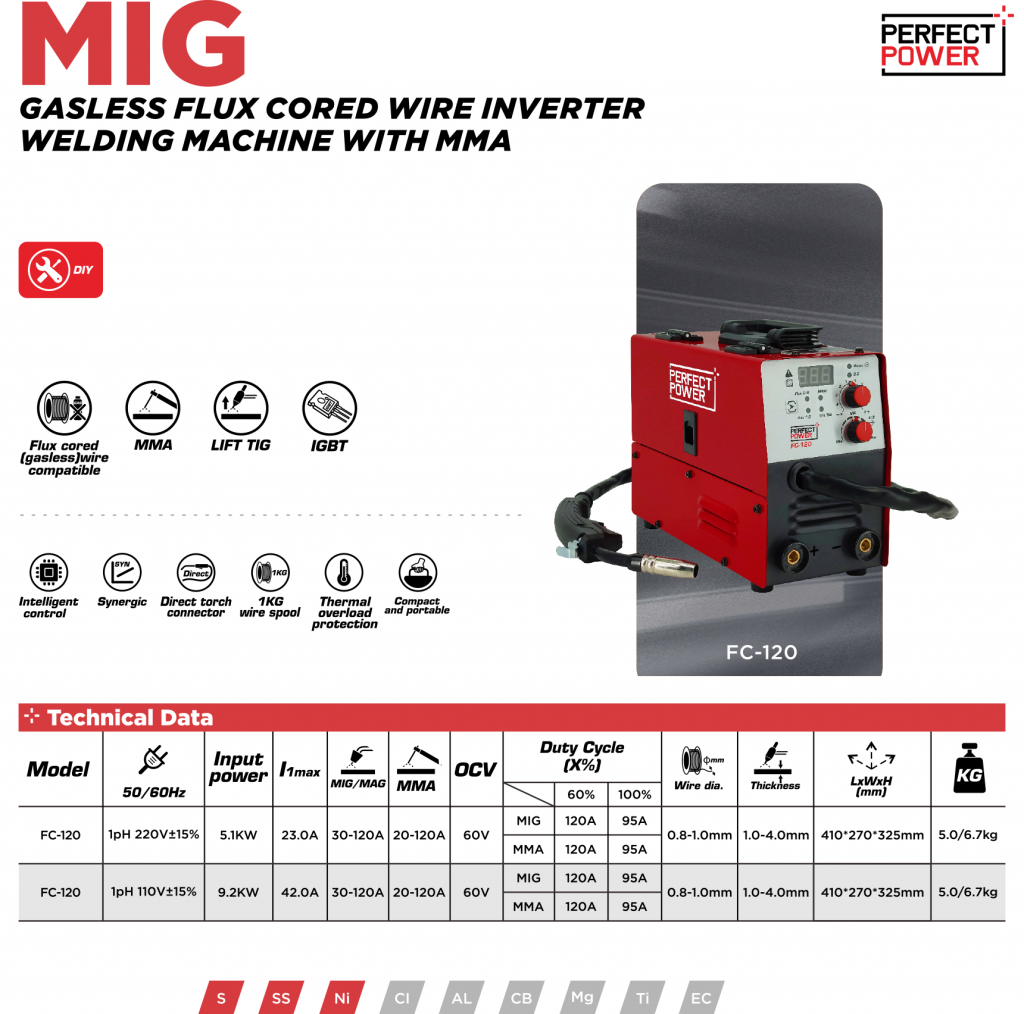
For an auto body shop to perform well, it must have a good welder around at all times. Welders for auto body work are essential in all things auto body repair and refurbishing. They are used to make a vehicle’s frame structurally sound after collisions and can also be used to replace or repair parts in auto bodies. Welders even come in handy when repairing metal from rust and corrosion over the years.
Beyond professional shops, DIYers and at-home mechanics use these welding machines for auto body work in the garage.
Welder for Auto Body—Buying Guide
When on the hunt for the best auto-body welder, it’s good to know the different types available, as well as their features before settling on the one for you, and we take a look at these, as well as some general considerations, to assist you in your selection.
The Types of Welding Processes
As previously mentioned, there are a variety of different welders for auto body work. Each of these welding processes are used differently and require specific accessories. By going over each type of welding process, buyers will be able to choose the right welder for auto body work and understand how it is used and what they need to use it.
Arc Welding
Arc welding utilizes electricity to form an arc. The heat from the arc is able to fuse metals together to create welds and connect materials. Although this is the general function of all arc welders, there are a few different kinds of welders that are important to differentiate between when shopping for welding machines.
MIG Welding
MIG welding is a common process that stands for Metal Inert Gas Welding, but it also goes under the name Gas Metal Arc Welding (GMAW) or Metal Active Gas Welding (MAG). MIG welding can be used with both an electrode wire, that is emitted from a spool gun and shielding gas, that travels through a connected gas hose. When MIG welding is used with a shielding gas, the material is protected against any kind of contamination.
TIG Welding
TIG stands for Tungsten Inert Gas Welding, but it is also referred to as Gas Tungsten Arc Welding (GTAW). Similar to MIG welding, TIG welding uses an electrode in its welding process. The difference is that this electrode is specifically made out of tungsten. TIG welding, just like MIG welding, also uses a shielding gas to protect the metal and the weld puddle.
Stick Welding
Stick welding, or Shielded Metal Arc Welding (SMAW), uses a flux-coated electrode. This process, in particular, stands out because the arc used to weld is contained within the metal of the electrode, thus doubling as a consumable and protected electrode. When the stick melts it acts as a filler material to form the weld.
Flux-Core Welding
This welding process utilizes a hollow continuous electrode. The electrode is then filled with a flux to form the arc. This type of welding also can be used with shielding gas.
Welder Considerations
As we have seen with the different types of welding processes, not all welders are the same. Therefore, not all welders are able to handle the same types of jobs. So, there are many different factors to consider before finding the perfect welder.
Material Type
The type of material that a user is welding on an auto body can affect a welder’s ability to successfully make a clean and strong weld. This is because specific welding processes and welding machines are made to weld different types of materials better than others. Most welding machines will specify what materials they are compatible with so it is very important to pick a welder that is suited for the project at hand.
Although not all welding machines under a certain process ensure the same type of compatibility, there are some guidelines we can follow. For example, aluminum is commonly found in auto bodies but is very hard to weld. This is because it is softer and weaker than other materials. TIG or MIG welders are recommended for welding this material as both processes will prevent contamination and will work faster to avoid burn-through.
Material Thickness
There are certain difficulties when it comes to welding materials of various thicknesses. With thin materials, there is the risk of burn-through. A welder with an adjustable frequency and pulse is more suited for thinner materials as these features work to prevent burn-through. Thinner materials are also difficult to work with because it is hard to get a thin enough weld bead to bond the metals together. That is why we recommend using a TIG welding machine because it has more control and users don’t need filler material.
Thicker metals come with the opposite issue as it may be more difficult for certain welders to melt all the way through the material. When looking for a welder that will be used for thick materials, a higher output amperage is key, as the more power the machine has, the more material it will be able to heat through.
To assist shoppers in confirming that a welder is able to function with a particular metal thickness, most listings specify the maximum and minimum gauge that the machine is able to weld.
Accessories
Along with the welding machine, many purchases also include different accessories and materials so users have all they need to start welding. By understanding what is needed for each job, shoppers will be able to evaluate what they want in a welder machine set or what they need to purchase along with the machine.
Each welding process necessitates different wires and electrodes to fuse materials together and to create an arc. Some welding machines come with a variety of different wires and electrodes so users can perform multiple processes with one machine. Other machines may not include these materials or, for more specialty jobs, the electrodes that are included may not be efficient. In these cases, users will need to purchase these materials along with the machine. For example, if users want to perform some overhead welding then they may consider purchasing a special 7018 electrode that prevents dripping, over the standard electrode that is included.
Beyond just electrodes, some products include things such as safety gear, a gas hose to connect to a shielding gas, a ground clamp, a regulator, and contact tips. Depending on the type of welding the machine performs, different accessories may be included.
Welding Safety
Although welding can serve as the backbone to auto body job repairs, it is important for all users, regardless of experience, to weld with caution and safety. Wearing safety gear, such as an auto-darkening helmet, insulated gloves, earplugs, and proper attire, can help to protect users while welding. Users should also practice protection methods when it comes to their vehicles.
Many often wonder, can welding damage electronics in the vehicle? And the answer is, yes, but this type of damage is completely preventable. To protect the vehicle’s electronic systems from welding damage, is it important for users to disconnect the battery and avoid welding near any wires or electronics.
Best Welding Equipment’s Top Picks for the Best Welder for Auto Body 2022
Welders are imperative to auto body repair, no matter if it’s at a home garage or workshop, or in a professional shop. Our list pulls together the best available welders for auto body that are available to buy now.
1. Best MIG Welder— MIG-230/MIG-230 MINI MIG MAG IGBT Inverter Welding Machine

For a clean and professional-looking weld quality, the Perfect Power MIG welder is designed to make all users look like professionals during auto body work. One thrilled buyer described their experience as “unbelievable,” and added, “Just laid down the nicest weld of my life.”
This is thanks to the machine’s voltage control knob that provides “very smooth” use, as another customer noted. Yet another reviewer’s comment reads, “All in all, if I were to recommend a MIG welder for ‘the hobbyist’, or more like myself, the average user, it would be this welder.”
This product comes with a MIG gun, a gas hose, and a ground clamp. All these accessories are perfect for MIG welding on aluminum or to weld exhaust pipes, which one user did; “I [welded] my 3-inch stainless steel exhaust pipe and muffler from the turbo all the way back and it looks just great.” For enhanced versatility, the set also contains a 2.5M(L) Power Cable,2.5M(L) 25mm² earth clamp (300A), M8*12mm Gas Hose (Hose Hoop*2pcs)+9-16mm hose clamp (2PCS), V type 0.8-1.0mm、U type 1.0-1.2mm wire feed drive roll, 3M(L) SN24 Euro connection MIG touch (graphite hose inside), 3M(L) Steel wire feed spring tube, 1.2 contact tip * 2、Wrench * 1.
2. Best TIG Welder— TIG-160/TIG-200 TIG Inverter Welding Machine With MMA Function

The Perfect Power weld lives up to its name, as it makes TIG welding a breeze for beginners thanks to a user-friendly design and an easy start. The almost 7kg inverter power system is extremely portable and light, allowing users to bring automotive welding to the comfort of their own homes.
According to one happy customer, “If you are looking for a nice portable TIG setup that will run on any plug in your garage, this is it.” The customer, who is highly trained and experienced in welders, went on to write, “I have to admit, this welder puts down some nice steady beads.”
This product is able to weld materials ranging in thicknesses from 1mm gauges to 6mm, according to one user who was able to weld “over 6mm steel with ease.” This particular product include a TIG torch, it is perfectly compatible with rods up to 3mm.
3. Best Stick Welder— ARC-160D/ARC-200D IGBT Inverter MMA Stick Welding Machine

What makes the perfect power stick welding machine one of the best stick welders on the market is its all-around impressive quality, performance, usability, and versatility. The Advanced control technology is used to meet variouswelding applications and greatly improve welding performance.Continuously weld 20PCS, Ø3.2mm(120A, 140A) ,Ø4.0mm
(160A) ,Ø4.0mm(180A) ,Ø5.0mm(200A) ,electrodes at 25℃ ambient temperature.
Many reviews were impressed by how easy welding projects became with this machine. A shopper stated, “The LCD display is easy to read, and this arc welder is so easy to use that it can be used by novices for practicing and for small welding operations to become a master welder.”
With a dual power supply, this welder is extremely versatile as it can be used anywhere. It also welds many different materials that could be found in an auto body repair, as one buyer who used it on their old car noted, “With being able to adjust the amps, I was able to fix and repair all of the body work I needed to.”
4. Best Welder with Flux-Cored Wire— FLUX CORED MMA FC-120 Gasless Flux Cored Wire Inverter Welding Machine

For any auto body work, the FC-120 MIG welder comes with everything that a user needs to do some flux-cored welding, all at a great value. The set includes a welding gun, clamp, a wire brush, and even an auto-darkening helmet.
One reviewer noted, “it’s pretty amazing how much you get here for the money.” This machine is perfect for any auto body repairs as it can easily weld steel, automotive sheet metal, and other thin metals.
For control and efficiency, the machine’s design integrates an adjustable wire feed speed and current flow. The welding wire releases metal inert gas to resist any oxidation on the steel for a stronger and polished weld. A few reviewers recommended purchasing extra wire along with this welder.
We hope our review of the best welders for auto body has been helpful. For more suppliers of related products, including propane torches, arc welders, tungsten electrodes, and steel consult our additional guides, or visit our website.



